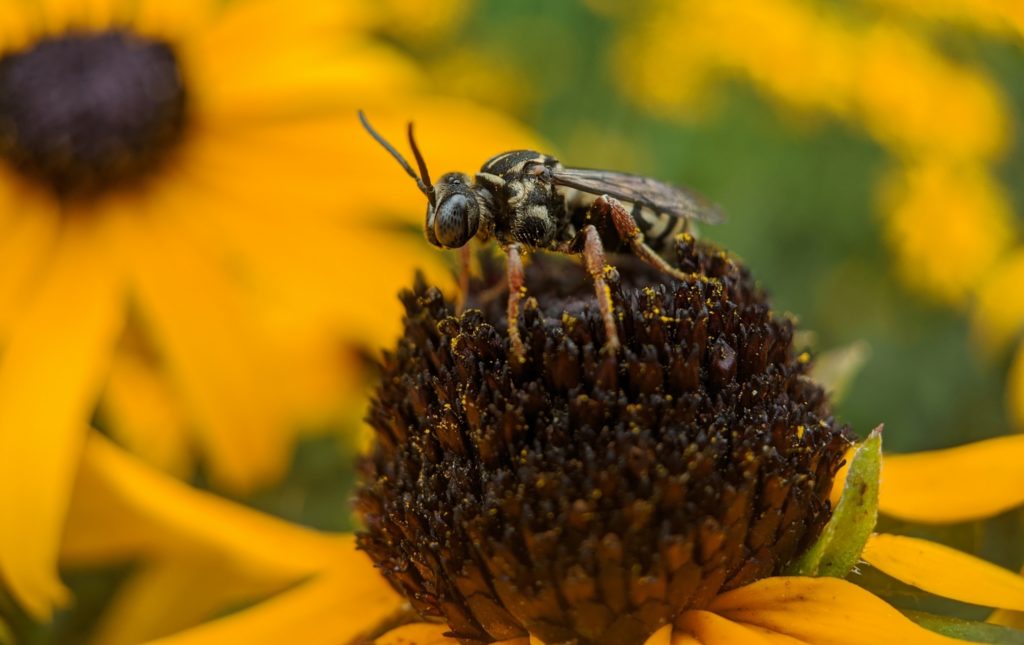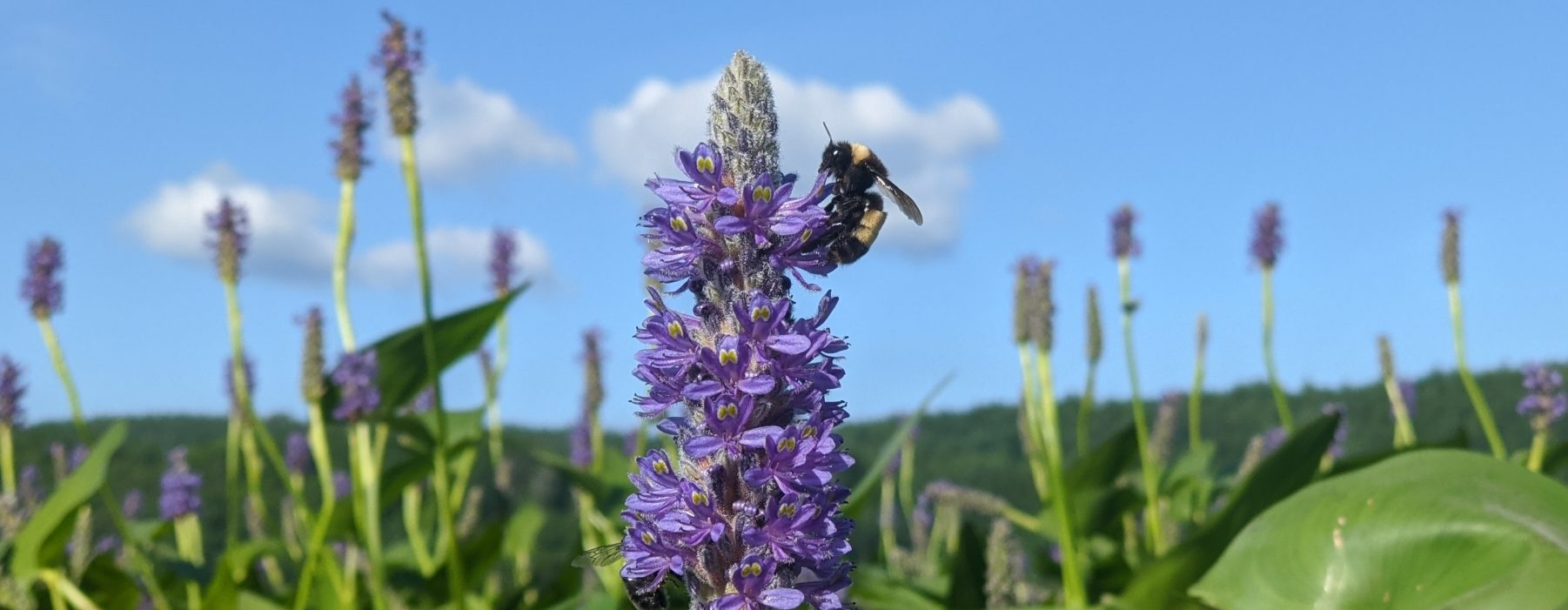Bees are among the most important pollinators in many habitats, and yet very little is known about the vast majority of the species. The Vermont Wild Bee Survey is the first comprehensive effort to document the bee fauna of the Green Mountain State.

A Longhorn-Cuckoo Bee (Triepeolus sp.)
Though the first results of our Wild Bee survey are in, it’s not too late to contribute to the next phase of our crucial research. Join the Vermont Wild Bee Survey on iNaturalist! You don’t have to be an expert or even know the bee species to share your photo observations.
It’s true—identifying bees can be daunting. Vermont has more than 350 species and some are smaller than a grain of rice. Yet with practice, many genera can be quickly recognized and astute observers will start to notice fascinating natural history happening all around them.
Identifying bees has historically been done almost exclusively with pinned specimens and microscopes. As a result, most of the identification information available is difficult to use without significant magnification and experience with entomological terminology. However, digital photography combined with iNaturalist has made identifying live bees from photographs possible.
This guide is intended to introduce the field-identifiable bee species of Vermont and help naturalists dabble in bee watching, whether with a personal camera or through others’ photographs on sites like iNaturalist.
Start your journey and learn how to recognize a Sweat Bee from a Mining Bee, a Carpenter Bee from a Bumble Bee, and even how to quickly recognize the tiny black bees that most people would pass off as gnats.
This guide has not been updated recently, and thus may contain some outdated information.
To identify an unknown bee, start here.
Explore by genera or species.
Explore specialist bees by host plant or by habitat.
Want to find a new species for the state? Check out our Most Wanted page.
Acknowledgements
The creation of this web resource was supported by an Apis Fund Award from the Gund Institute for Environment at the University of Vermont.
Many of the specimen photos used within this guide are from the Bees of Canada , a fantastic image gallery of the bee species, which includes the vast majority of the species found in Vermont. Photos of live bees were taken by Spencer Hardy unless alternative credit is given next to the image.
The entire Vermont Wild Bee Survey would not be possible without the expertise and generosity of a team of conservation biologists who identified specimens and organized the data.
Information about plant hosts and specialist bees is primarily from The Pollen Specialist Bees of the Eastern United States (Jarrod Fowler & Sam Droege 2020). Check out this guide if you are interested in creating a pollinator garden specifically for specialist bees.







